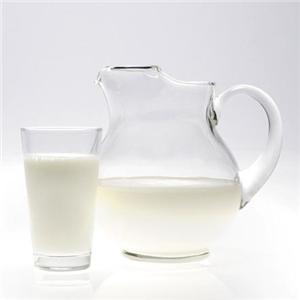REPORT about how Kolyada was taken home and the Goat was fed to the full in the Mogilev region

Ringing carol melodies scattered through the winter streets of the agricultural town of Polykovichi - first high female voices are heard, then cheerful children's singing joins them. The soulful sounds of folk instruments are already pouring out - the village accordion stretched its furs, mischievous rattles rattled and even spoons clicked in the skillful hands of the master. Finally, in the distance, the festive procession itself appeared as a bright point - Kolyada is walking through the yards! In colorful clothes, with a Christmas star, a bear on a harness, a "crane" in their hands and a Goat in a casing - they dance, sing and make people happy. BelTA correspondents joined the cheerful and lively crowd of mummers to find out what ancient carol rites and traditions the inhabitants of the Mogilev region observe.
“Kolyada is an unusual and mesmerizing Slavic holiday, which is rich in sacred meanings,” says Tatyana Zhigalina, HEAD of the Polykovichi rural house of culture. “It gives rise to a new agricultural circle, so for our ancestors it was one of the most important and significant annual stages. They loved this holiday because it gave people an atmosphere of joy and fun: everyone got together, walked, caroled, arranged games, guessed, went to visit each other. our local residents recalled that in her childhood, on the first day of carols, the entire floor and especially thresholds were covered with a Christmas tree - it was believed that this was a special place in the house, a symbolic transition between this and that world.
The people called Kolyada Christmas Eve - it was on the evening of January 6 that the celebration began with a ritual meal, which lasted until Epiphany itself. On the first day, they sat down at the table only with the appearance of the first star in the sky, because according to the legend, it was she who once led the Magi to the barn where Jesus Christ was born. The hostesses put kutya on the table - lean, poor or hungry. She was boiled in water, with honey and nuts, and before eating she was consecrated in the church. As a rule, dinner was held in solemn silence. On the evening of January 13, kutya could already be made rich, with bacon and roasted, hence the name - thick, generous or rich. There was also a third kutya, Epiphany, which was being prepared on the evening of January 18th. In the Mogilev region, it was called water.
“In our area, a spoonful of kutia was left from each carol,” recalls Tatyana Zhigalina. “On Baptism, all 3 spoonfuls of porridge were mixed with consecrated water and added to animal feed - so that they were healthy, bred, gave a lot of MILK and eggs. This rite is typical only for of our district, and the locals talked about it more than once. Just not to freeze everything that I have sown!
Another integral tradition of the holiday is carolers, who began to go from house to house on the evening of January 7th. According to the head of the village house of culture, in these places people traditionally carried in their hands a "calad zorka" - a symbol of the Bethlehem star, and dressed up in various animals. The main characters were a bear and a goat. The clumsy artist, as in the old days at fairs, was supposed to dance and amuse the people. For a sweet treat and praise, Mishka danced to the accordion, and even mimicked the woman - he showed how she kneads the dough. Laughter will burst out in the crowd after such parodies - and that's all he needs, glad to try!
The goat was also the central character of the holiday. She is a symbol of wealth and prosperity: according to popular beliefs, she averted misfortune from home and promised a rich harvest to those who treated her well. It is not for nothing that the song sings: “Gogogo kaza, gogogo shera!
“Our goat always comes into the house with carolers,” Tatyana Zhigalina continues. “First, she dances merrily, and then kicks - and dies! And this is not just like that, it has its own symbolism: everything that dies is reborn again. the cycle of life: this is how nature wakes up from sleep in the spring, this is how the human soul remains for centuries after death.The same symbolism is embedded in another rite that occurs in the Mogilev region, when on the last day of Maslenitsa, the eldest woman in the house burned an ordinary pancake along with a effigy of Winter This means that the old life does not leave without a trace, but gives a new one.
Since the goat is a carol, after death it can only be awakened by a good treat of the owners: “Kaza galloped, dy and fell! !". The horned one is grateful for any gifts: she accepts with a pure soul both lard, and sweets, and "a measure of life, the cab was full." All edible offerings are hidden in Mekhanoshi's dimensionless and bottomless bag, in order to later share the honestly earned booty among all the carolers.
In the crowd of mummers, another unusual hero was lost - Zhorau, who is presented in the form of a scythe with a towel put on it. It is he who warns the owners with his long sharp beak: "If you don't give Kalyadze, then you'll die." Therefore, Kolyada was always allowed into the house: the one who does not open the door will fail all year - he will not see any harvest, nor prosperity, nor HEALTH. And it happens that the carolers are also mischievous. “To receive Kolyada in your yard is a great honor for every family, you can’t not open the door in front of the mummers,” says local resident Yanina Verinskaya. The owners woke up in the morning - but they couldn’t get out, it was closed. They had a science. "
Yanina Lyudvigovna meets Kolyada together with her little grandchildren Stefania and Artem. "There was a kalyada kalyada sing-along, it went in and let Yanink's flowers fall all over!" - the mummers laugh merrily in the courtyard of the house and knock loudly on the window. A minute - and the hostess with a joyful smile opens the door wide: "Come in, dear guests!". Everything is ready here - a festive table with kutya, and delicious gifts for carolers. However, a cheerful folk song flies into the house first, from which both legs and shoulders start to dance: “Good evening to the one who ў gotamu home! caresses!"
After the carol rite with the "dying" of the goat and the performance of toast songs to the owners, carolers are presented with bread, bacon, sausage and sweets. In gratitude, the mummers scatter grain, so that it falls into every corner - for prosperity, wealth and a good harvest. “I have known all these rituals since childhood, but I grew up in the village,” says Yanina Verinskaya. “I myself am not a local, I come from the Glusk region. Carolists also went around with us, but there they were also accompanied by a gypsy. Basically, women and children caroled "I have Polish roots on my father's side, Belarusian roots on my mother's side. Therefore, both Catholic and Orthodox Christmas were celebrated in the house, all customs and rituals were observed. I remember this very well as a child."
And Kolyada has always been with music, which created an unusual atmosphere for the whole action. Accordion, rattles, tambourine, spoons - everything sounded joyfully and from the heart. In our company of carolers, the tone and mood were set by the spoon-carrier Vasily Chmyrev, who carried his unusual hobby through six decades. “I started playing spoons when I was still a child, at the age of five - my uncle played the harmonica, and I tapped a little,” the folk musician recalls. also performed in military units. That's how my skills developed. "
In carol ceremonies, the spoon carnivore constantly participates, and even performs with the folklore ensemble "Krynichanka" of the Polykovichi rural house of culture. “People are surprised - today few people play spoons,” he says. “But I have a soul for this instrument - I’m interested, I hear every note and how I tap it. In childhood, we also caroled, the rituals were the same - after all taken from the old days. We were waiting for these holidays, preparing for them. You go home - people immediately get in the mood. Everyone was waiting for them to look in: if they come, it means to be kind."
Alesya Panchenko, a student of the Mogilev College of Arts, specializing in directing folk rituals and holidays, also became a participant in carols in the Mogilev region. The girl is finishing her fourth year and is writing her thesis on the Kolyada holiday. “The more I communicate with the old-timers of these places, the keepers of ancient rituals and traditions, the more I am convinced that this is important and necessary,” says Alesya. “This is a folk memory, you need to know your roots - how our ancestors lived and worked, how they celebrated holidays. Both pagan and Christian, Orthodox traditions are mixed in Kolyadki. This is a very rich holiday, about which you can collect a lot of interesting material. What are the enthusiastic stories of our grandmothers worth! Youth must be told and shown this."
Julia Evmenkova,
photo by Oleg FOYNITSKY,
BELTA.
Read together with it:
- Progress Agro presented two cloned calves in the Krasnodar region.According to Sergey Yakovenko, HEAD of the Altragene laboratory, large fetuses are a common problem in cloning, and researchers are continuing to work to reduce this risk. Previously, culture media containing bovine serum containing growth factors could contribute to increased calf weight. Now, a synthetic medium is being used, which has shown positive results. All newbornsThe calves were manually...





























































